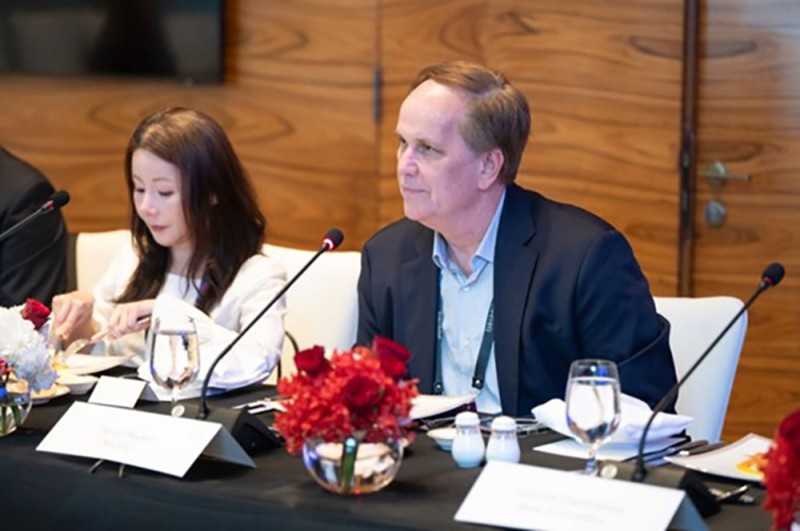
东南亚超过2.8亿人口(约占该地区总人口的40%)信奉伊斯兰教。这催生了对迎合伊斯兰生活方式的商品与服务的需求。这种需求不仅限于清真食品:穆斯林消费者还要求更保守的时装或不使用猪源性成分及酒精的化妆品。
甚至连东南亚金融业也日益清真化。根据伊斯兰私营部门发展公司(Islamic Corporation for the Development of the Private Sector)与伦敦证券交易所集团(London Stock Exchange Group)的研究,2023年,东南亚伊斯兰金融规模达约8,590亿美元,高于2020年的7,540亿美元。
总部位于阿姆斯特丹的云原生软件即服务组合式核心银行平台Mambu,希望开拓这个不断增长的市场。该公司董事总经理兼亚太区销售主管大卫·贝克尔表示:"东南亚市场,尤其是马来西亚和印度尼西亚,在伊斯兰银行领域的发展活力非凡。"
该公司已与东南亚客户合作,包括马来西亚最大的伊斯兰教法合规金融产品提供商伊斯兰银行(Bank Islam),以及印尼数字银行Jago银行(Bank Jago)。

贝克尔指出,伊斯兰金融与传统银行业务增长速度相当,因此Mambu希望提供支持伊斯兰教法合规产品的工具,如利润分享。
与传统银行业不同,伊斯兰金融机构必须避免与涉足有害或被视为“哈拉姆"(禁止)产品的企业往来,如猪肉、酒精或赌博。
伊斯兰银行还不能收取利息,因此必须通过其他机制产生回报,如利润分享或租赁。
贝克尔乐观地认为,东南亚更年轻、更熟悉移动技术的群体将被数字金融解决方案——尤其是体现伊斯兰教义的方案——所吸引。
全球最大穆斯林国家印度尼西亚是伊斯兰金融的明确目标市场。另外一个选择是邻国马来西亚,三分之二人口为穆斯林。新加坡、菲律宾和泰国也存在相当规模的穆斯林群体。
专注于伊斯兰商业研究的新加坡ESSEC商学院(ESSEC Business School)教授塞多米尔·内斯托罗维奇表示,马来西亚是东南亚地区最早采用伊斯兰金融的国家,在该领域的增长方面已“达到顶峰”。相反,印度尼西亚在遵循伊斯兰教义的零售银行和“伊斯兰保险”领域存在更大潜力。
内斯托罗维奇表示:“印尼有广阔的发展空间,因此许多公司希望进入这个市场。”
但他警告称东南亚地区存在特有风险。一方面,与中东更同质化的市场不同,东南亚更具异质性,意味着企业需要针对一系列不同的经济体系、消费者群体和监管制度量身定制产品方案。
Mambu的贝克尔承认东南亚地区存在挑战,包括遵守法规的必要性。但机遇规模大于风险。
他表示:“我们目睹这个市场持续增长,我认为这正是政府和监管机构如此支持该行业的一个因素。”(*)
译者:刘进龙
审校:汪皓
东南亚超过2.8亿人口(约占该地区总人口的40%)信奉伊斯兰教。这催生了对迎合伊斯兰生活方式的商品与服务的需求。这种需求不仅限于清真食品:穆斯林消费者还要求更保守的时装或不使用猪源性成分及酒精的化妆品。
甚至连东南亚金融业也日益清真化。根据伊斯兰私营部门发展公司(Islamic Corporation for the Development of the Private Sector)与伦敦证券交易所集团(London Stock Exchange Group)的研究,2023年,东南亚伊斯兰金融规模达约8,590亿美元,高于2020年的7,540亿美元。
总部位于阿姆斯特丹的云原生软件即服务组合式核心银行平台Mambu,希望开拓这个不断增长的市场。该公司董事总经理兼亚太区销售主管大卫·贝克尔表示:"东南亚市场,尤其是马来西亚和印度尼西亚,在伊斯兰银行领域的发展活力非凡。"
该公司已与东南亚客户合作,包括马来西亚最大的伊斯兰教法合规金融产品提供商伊斯兰银行(Bank Islam),以及印尼数字银行Jago银行(Bank Jago)。
贝克尔指出,伊斯兰金融与传统银行业务增长速度相当,因此Mambu希望提供支持伊斯兰教法合规产品的工具,如利润分享。
与传统银行业不同,伊斯兰金融机构必须避免与涉足有害或被视为“哈拉姆"(禁止)产品的企业往来,如猪肉、酒精或赌博。
伊斯兰银行还不能收取利息,因此必须通过其他机制产生回报,如利润分享或租赁。
贝克尔乐观地认为,东南亚更年轻、更熟悉移动技术的群体将被数字金融解决方案——尤其是体现伊斯兰教义的方案——所吸引。
全球最大穆斯林国家印度尼西亚是伊斯兰金融的明确目标市场。另外一个选择是邻国马来西亚,三分之二人口为穆斯林。新加坡、菲律宾和泰国也存在相当规模的穆斯林群体。
专注于伊斯兰商业研究的新加坡ESSEC商学院(ESSEC Business School)教授塞多米尔·内斯托罗维奇表示,马来西亚是东南亚地区最早采用伊斯兰金融的国家,在该领域的增长方面已“达到顶峰”。相反,印度尼西亚在遵循伊斯兰教义的零售银行和“伊斯兰保险”领域存在更大潜力。
内斯托罗维奇表示:“印尼有广阔的发展空间,因此许多公司希望进入这个市场。”
但他警告称东南亚地区存在特有风险。一方面,与中东更同质化的市场不同,东南亚更具异质性,意味着企业需要针对一系列不同的经济体系、消费者群体和监管制度量身定制产品方案。
Mambu的贝克尔承认东南亚地区存在挑战,包括遵守法规的必要性。但机遇规模大于风险。
他表示:“我们目睹这个市场持续增长,我认为这正是政府和监管机构如此支持该行业的一个因素。”(*)
译者:刘进龙
审校:汪皓
Over 280 million Southeast Asians, about 40% of the region’s population, identify as Muslim. That’s spawned demand for goods and services that cater to a more Islamic lifestyle. It’s more than just halal food: Muslim consumers also demand more modest fashion or cosmetics that don’t use pig-derived products or alcohol.
Even Southeast Asia’s finance sector is becoming more halal. Islamic finance in Southeast Asia totaled roughly $859 billion in 2023, up from $754 billion in 2020, according to a study from the Islamic Corporation for the Development of the Private Sector and the London Stock Exchange Group.
Mambu, a cloud-native, software-as-a-service, composable core banking platform based in Amsterdam, wants to tap this growing market. “The Southeast Asian market, particularly Malaysia and Indonesia, is incredibly dynamic in terms of how they’ve grown in the Islamic banking space,” says David Becker, managing director and head of APAC sales at the firm.
The company already works with Southeast Asian clients like Bank Islam, Malaysia’s largest provider of shariah-compliant financial products, and Bank Jago, an Indonesian digital bank.
Becker says that Islamic finance is growing just as quickly as traditional banking, and so Mambu hopes to provide tools to support shariah-compliant products like profit sharing.
Unlike in conventional banking, Islamic financial institutions must avoid companies that deal in products that are harmful or considered “haram”, like pork, alcohol, or gambling.
Islamic banks also can’t charge interest and so must instead generate a return through some other mechanism, like profit-sharing or leasing.
Becker is optimistic that Southeast Asia’s younger and more mobile-savvy population will gravitate towards digital financial solutions—and particularly those that reflect Islamic principles.
Indonesia, the world’s largest Muslim country, is a clear target market for Islamic finance. Neighboring Malaysia, where two thirds of the population identify as Muslim, is another option. There are also significant Muslim populations across Singapore, the Philippines, and Thailand.
Malaysia, the first country in the region to adopt Islamic finance, has “reached a peak” when it comes to growth, says Cedomir Nestorovic, a professor at the ESSEC Business School in Singapore who focuses on Islamic business. Instead, Indonesia offers more potential for retail banking and “takaful” insurance, a type that follows Islamic principles.
“There is plenty of room for progress in the country, so many companies want to come to Indonesia,” Nestorovic says.
Yet he cautions that Southeast Asia presents its own risks. For one, unlike the Middle East’s more homogenous market, Southeast Asia is more heterogenous, meaning businesses will need to tailor their offerings to an array of different economies, consumer bases and regulatory regimes.
Becker, from Mambu, acknowledges the challenges present in Southeast Asia, including the need to follow regulations. Yet the size of the opportunity outweighs the risks.
“We just see it growing and growing, and I think that’s a factor in why governments and regulators have been so supportive,” he says.

